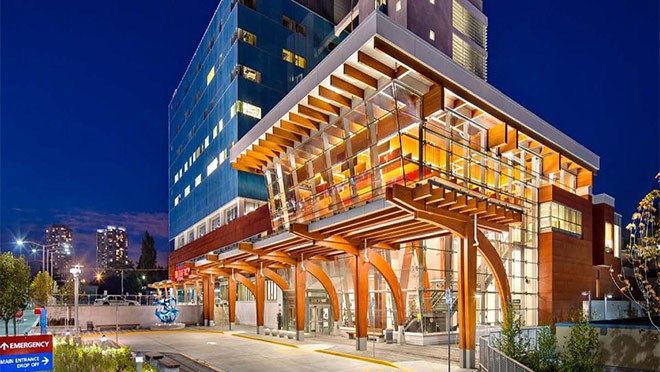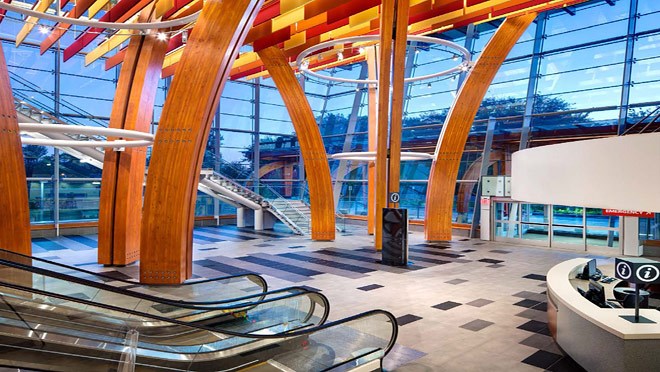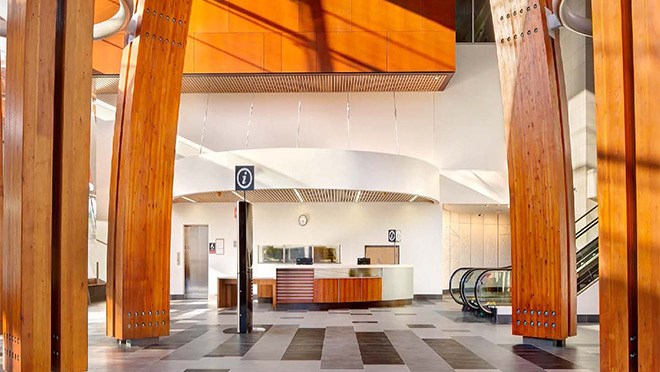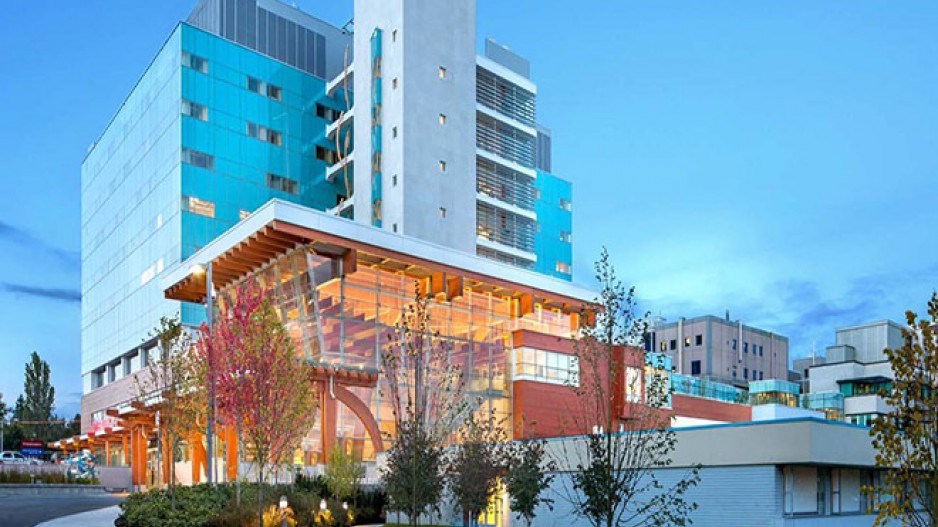Surrey has been one of the fastest-growing cities in Canada for a number of years now. That kind of growth has been great for the city in many ways, but hard on its infrastructure, including its health-care facility.
Opened in 1959, Surrey Memorial Hospital was originally designed to accommodate about 40,000 emergency room patients a year. Fifty years later, it was groaning under the stress of handling more than 100,000 emergency patients in virtually the same space and had become one of the busiest emergency departments anywhere in the country.
Today, however, with an expanded emergency department and a new eight-storey Critical Care Tower, all that has changed.
Investment in health and energy efficiency

When the $512 million expansion of the Surrey Memorial Hospital began in 2011, it was the largest health-care project in the history of British Columbia. The expansion would add crucial floor space to the emergency department, as well as 151 acute-care beds (30% more than it had before) in the new Critical Care Tower, including 48 in the neonatal intensive care unit. It would also allow room for an expanded and updated laboratory and larger University of British Columbia School of Medicine satellite campus.
But all that increased space would also mean significantly increased energy use, and therefore increased energy costs, for Fraser Health.
A hospital necessarily consumes a lot of energy – just think of the 24-hour ventilation, advanced life-saving equipment and clean air required to help keep people healthy. Energy conservation was critical, says Robert Bradley, energy conservation manager for Fraser Health. “Adding more space, plus even more state-of-the-art equipment and systems, was going to increase how much energy the hospital consumed, no matter what. Investing in energy efficiency was a high priority to avoid added energy costs.”
Designing to save 2.83 million kilowatt hours of energy a year

To ensure energy efficiency was built in to the project, Fraser Health decided to participate in BC Hydro’s New Construction Program (NCP).
The NCP provides funding for an energy-modelling study, which is essentially a simulation of how much energy a building will use hourly over a full year. Through this study, designers can compare various lighting, heating and cooling systems, as well as windows, roofs and walls. It will even look at how the building is situated on the site to determine the most energy-efficient and cost-effective design. The program also helps builders pay for a portion of the costs associated with installing the energy-conservation measures identified in the energy-modelling study.
The result for Surrey Memorial Hospital is an energy savings of 2.83 million kilowatt hours a year over a building designed without those energy-conservation measures. That is the highest energy savings of any health-care facility that has participated in the New Construction Program to date.
Going beyond the base level
The BC Hydro New Construction Program, says Bradley, “encourages designers and developers to go beyond the norm.”
“Designing a building to achieve a base level of energy efficiency is not too challenging for most design engineers, so this program asks them: ‘How can we go further? How can we be more sustainable?’” he adds.
For Surrey Memorial Hospital, the answer to those questions included adding high-performance air-to-water heat pumps and heat recovery systems that alone will save more than two million kilowatt hours of electricity a year, yet still keep patients and staff comfortable and breathing clean, healthy air. The hospital also benefits from daylighting (using natural light as much as possible), increased roof and wall insulation, interior lighting controls based upon occupancy and need, and reduced interior and exterior lighting power density from using energy-efficient light fixtures and lamps.
LEED Gold Status and good looks combined

Delivered through a public-private partnership, the Surrey Memorial Hospital expansion recently achieved LEED (Leadership in Energy and Environmental Design) Gold status for its energy efficiency and sustainability. It also looks good, with innovative use of warm wood – in the main lobby, for example, cedar columns stretch up like trees in a forest – and patient rooms that have been carefully positioned to feature beautiful nature views.
Says Bradley: “The expansion looks fantastic. It was built based on the latest research that says wood can be calming and comforting, and that lots of daylight and views of green spaces can help people recover faster. But without a doubt, it was built better with the help of the New Construction Program – not just its incentives, which are important in reducing the payback time for installing energy-saving measures, but also with its people and their support and expertise.”
About the New Construction Program
The New Construction Program provides financial incentives for new institutional, commercial and multi-unit residential buildings. If you qualify, BC Hydro will fund up to 100% of an energy-modelling study, by an approved consultant, to a maximum of $15,000 or $30,000, depending on building type, which can be used towards LEED certification and to apply for FortisBC capital incentives (some restrictions apply).




